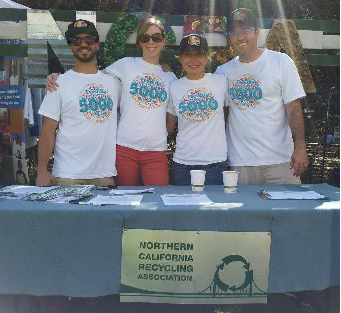HELP STEER TOWARD ZERO WASTE!
Want to be at the heart of a thought-leading recycling organization? Other organizations are working for Zero Waste now, but NCRA has been leading in that direction for many years, is still out front, and is still on the move. You can help develop the cutting edge by serving on the Board of Directors.
NCRA will have six board positions open in the January election. It’s a two-year working post. Attendance at nearly all ten meetings a year is important, as is between-meeting work on at least one committee. Meetings move around the greater Bay Area. Phone participation is possible at some but not all locations especially at tour sites. Directors discuss issues, hear debates, and influence regional and national recycling thinking. They track and comment on legislation; listen to leaders in the regional industry; work on behalf of colleagues who need a boost; tackle issues that can’t be ignored; tour facilities; and talk business with operators. Benefits include free entrance to the annual Recycling Update.
Read about NCRA’s large vision in its bylaws, Article III: Purpose, Principles, Policies and Objectives. (Need Bylaws link)
You can be a part of the action! To run for the board, submit a campaign statement of up to 200 words. Say who you are and why you’d like to serve. Here are last year’s statements and 2013’s.
By midnight December 6, notify NCRA that you want to run. By midnight December 10, send in your statement with contact information to ncra@ncrarecyces.org. It will be presented to the members electronically. Voting will be conducted electronically from January 5-14. Results will be announced at the Members’ Meeting on January 15.
So help build your industry! Have fun with your colleagues! Get your statement in!

